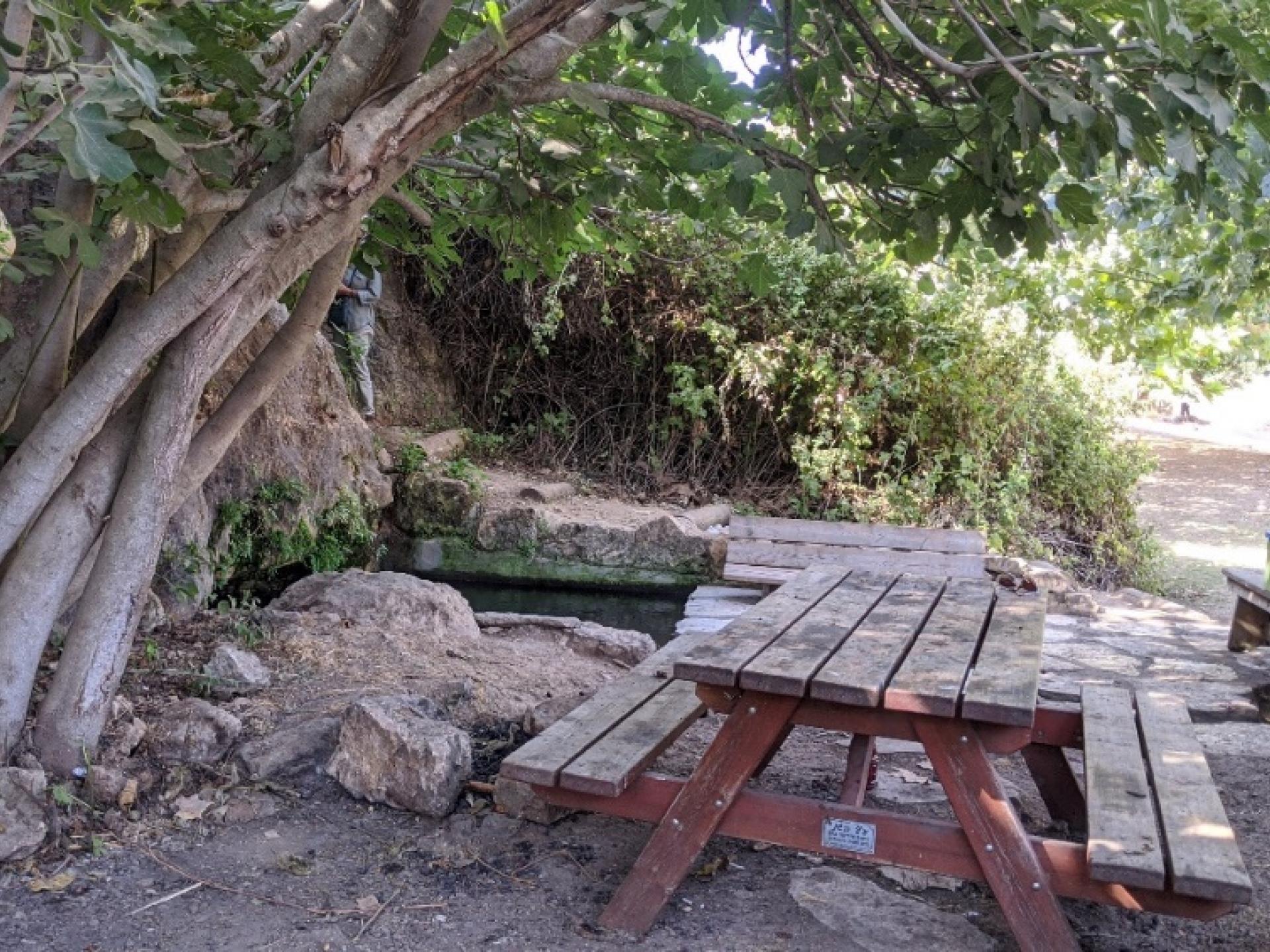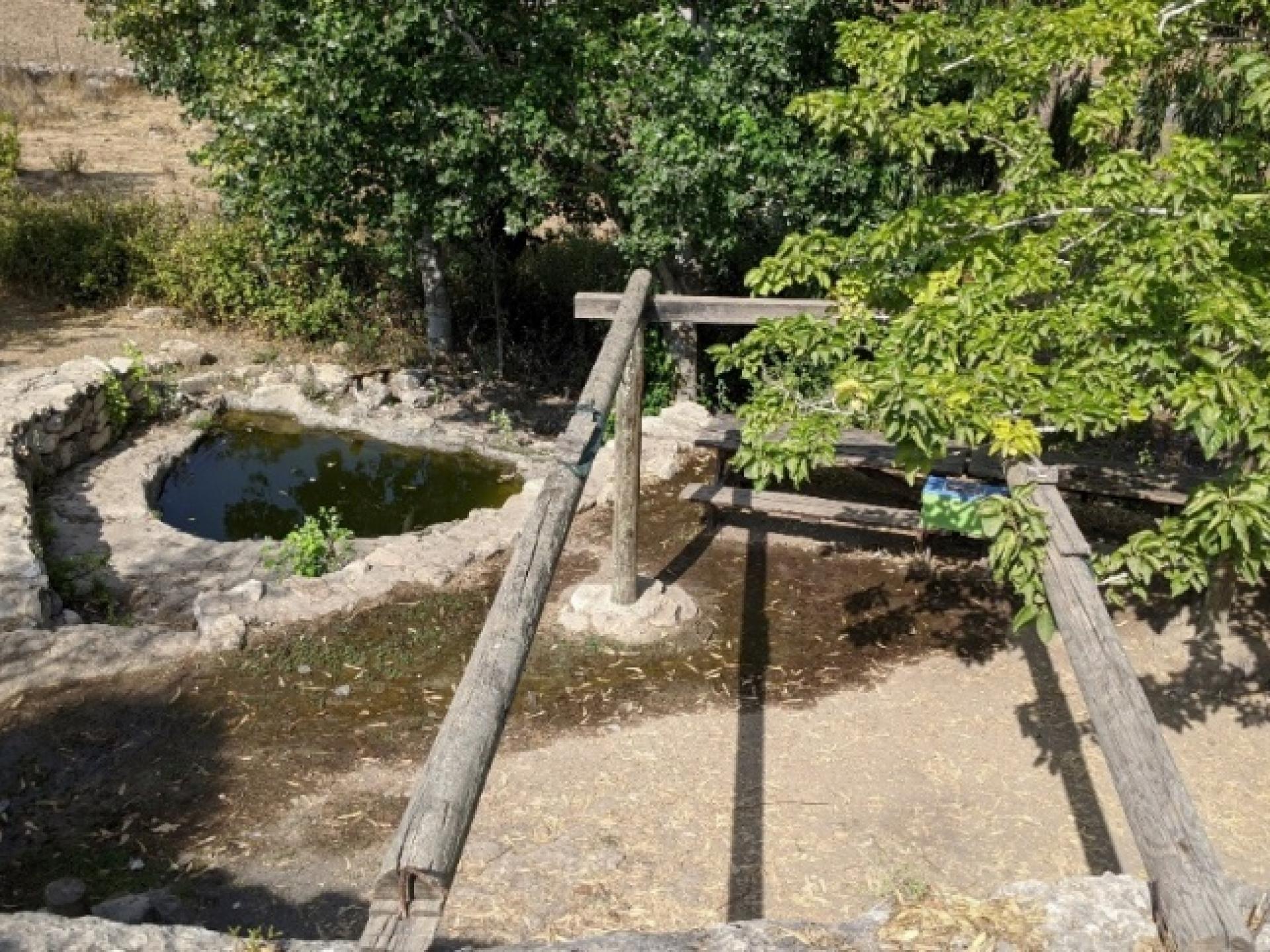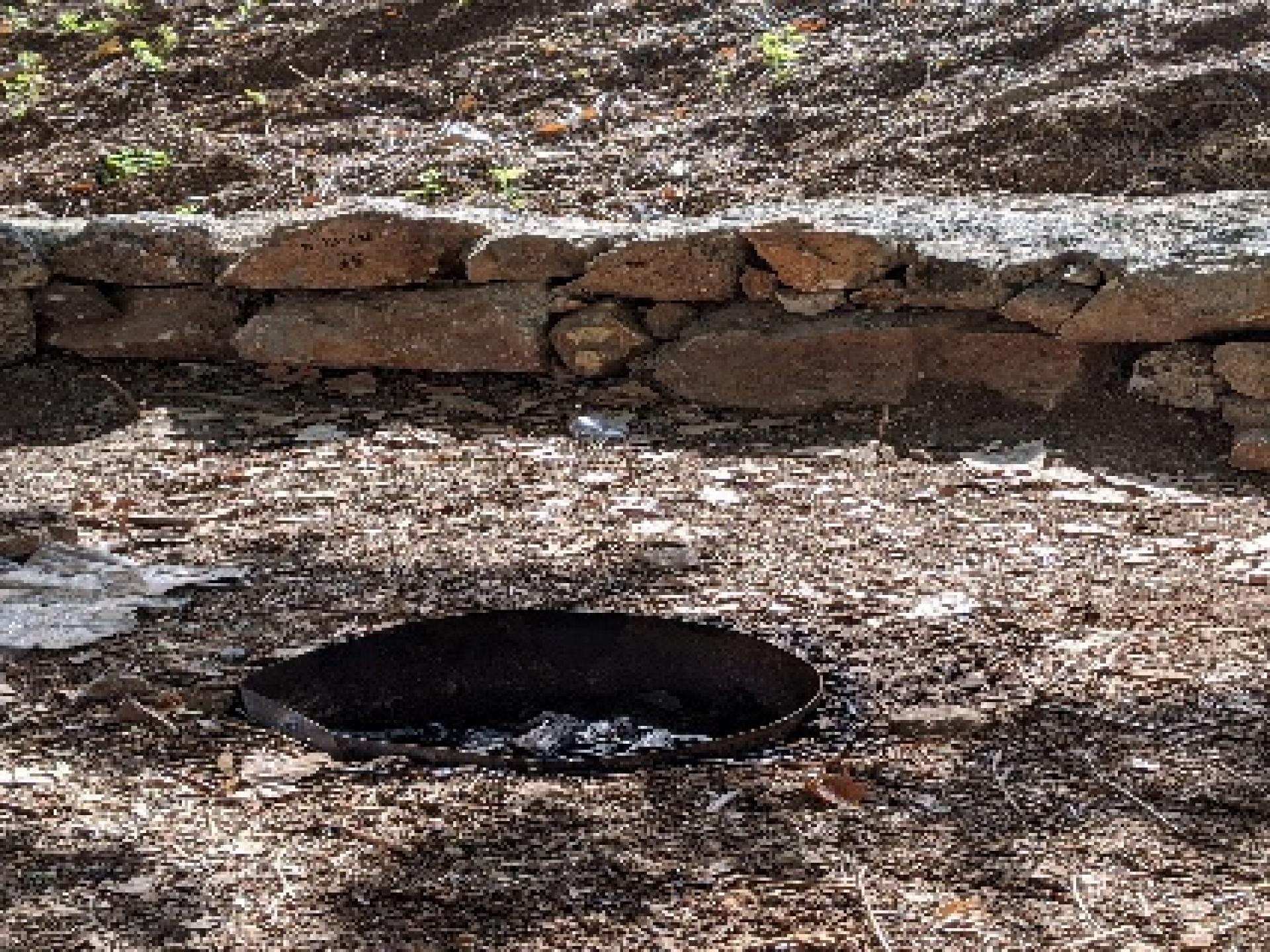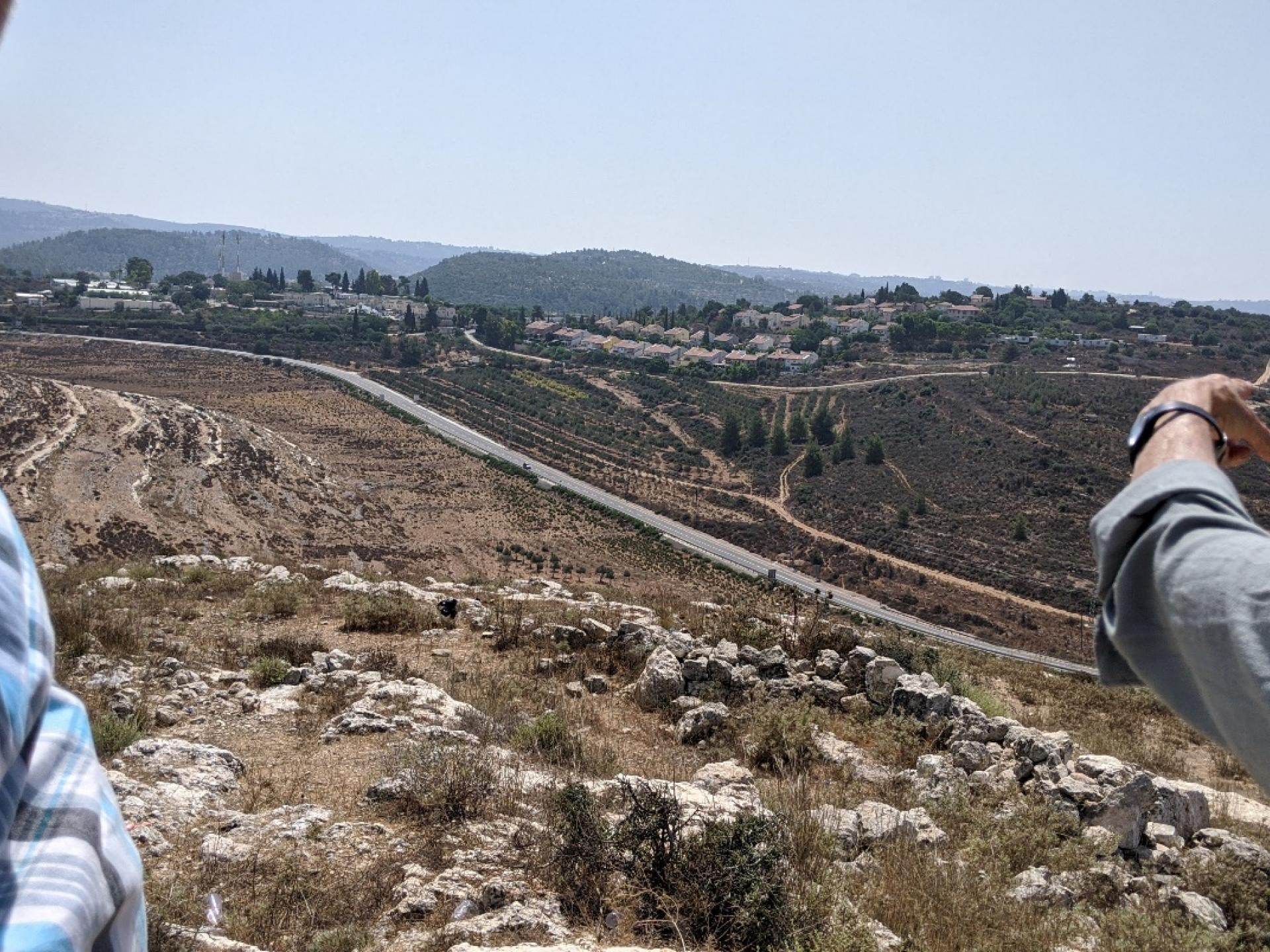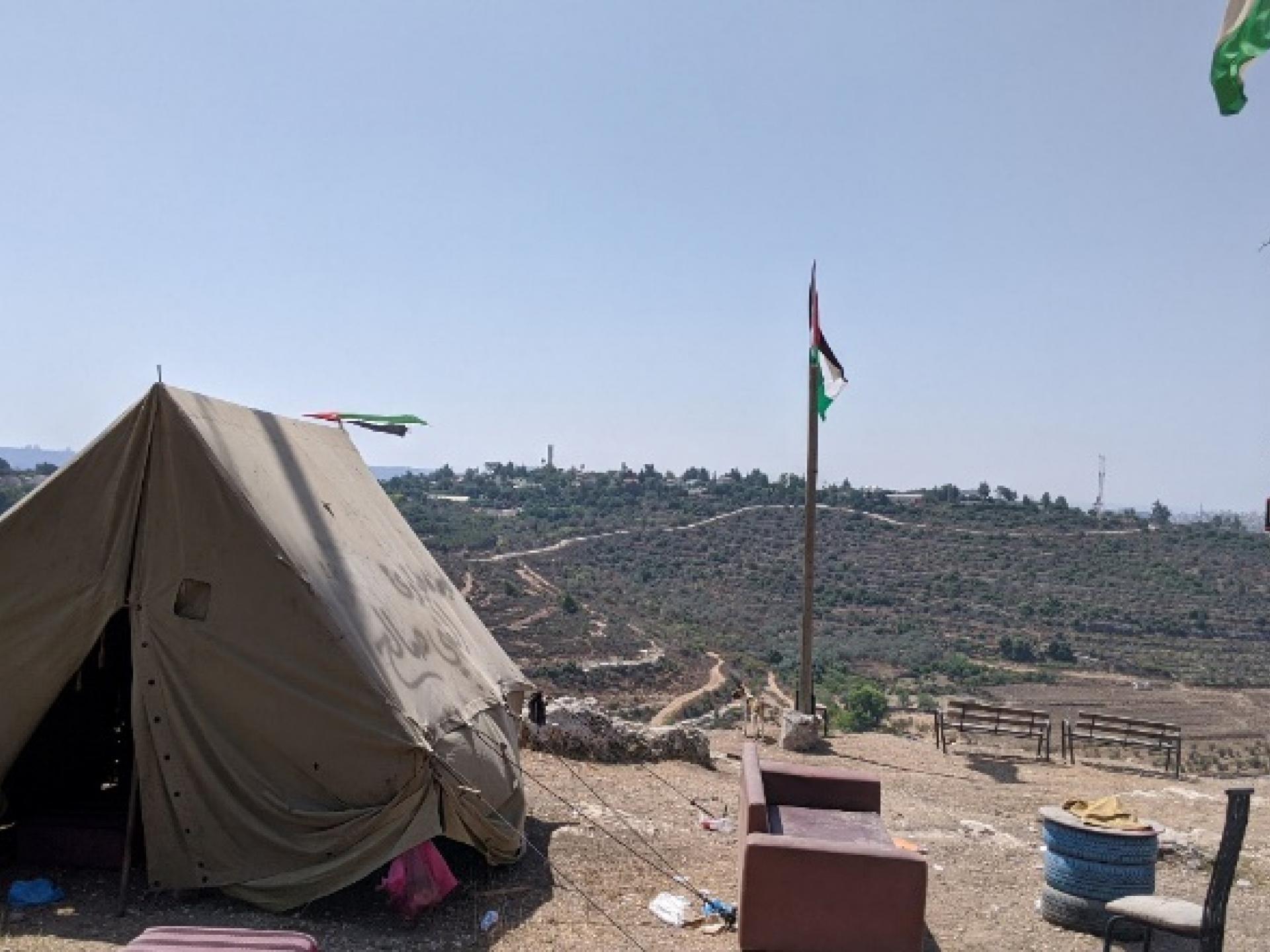The village of Nabi Saleh is struggling for it's survival
We stopped at the Ein al Kus (the Arch) spring in the village of Nabi Saleh. It’s the well-known spring taken over in 2007 by the Halamish settlement that claimed it was abandoned. Demonstrations to take back the spring and Palestinian land began in 2009 and continued until 2016. Six Palestinians were killed and many injured during the demonstrations.
The sign reading ”Me’ir’s Spring,” named after a settler from Halamish, was erected by the settlers. Ein al Kus is located between two additional springs – Ein Khaled, and Ein Hammam. Palestinians are forbidden to access them, and there is no reference to the Palestinian names of the springs at any of the sites.
All the springs have been refurbished in a “nature camping” style.
A few minutes after we reached the springs three soldiers, armed from head to toe, appeared and aggressively, suspiciously demanded to know who we were.
That question revealed that Jewish hikers are an unexpected sight here. It seems the location exists primarily for the soldiers stationed in the area.
From the springs we went up to the village for an appointment with Naji Tamimi, the village head. He’d participated the previous day in a meeting at the nearby antiquities site which is being excavated in violation of international law by the archaeological department of Bar Ilan University. The meeting was organized by Emeq Shaveh and included archaeologists from Bar Ilan, from Emeq Shaveh and MKs Musi Raz and Gabi Laski.
The hilltop flags well represent the current stage of the village’s struggle to survive, the stage following the demonstrations in which many Israelis also participated, including Anarchists Against the Wall, who have been demonstrating in recent months against the Evyatar settlement established on Mount Sabih, on land belonging to the town of Beita.
Unlike the large, prosperous town of Beita, Nabi Saleh is a poor, small village. Tamimi says the barriers make it hard to access workplaces outside the village. That’s the main reason people are leaving. 80% of its agricultural land and sites for future construction are in Area C, as are the 20 dunums on the village slopes which he himself owns, so he’s unable to build homes for his children on his land.
We ascended the hill on which five Palestinian flags fly on high masts visible from a distance. These flags are a message to the settlers and the army: “We’re here [tsumud],” said Naji. He recounted the developments: initially there was one large Palestinian flag on a tall metal pole. A month ago, at 4 AM, settlers came and cut down the pole. The village youth responded by erecting five flagpoles and setting a tent in their midst. They come every evening and remain into the night.
As he spoke I remembered Ahad Tamimi, a daughter of the village, who slapped an IDF soldier who had burst into her courtyard in 2017. She and Nuriman, her mother, were jailed for 8 months in an Israeli prison, and the village became a symbol of the struggle to free Palestinians from the burden of Israeli occupation.


